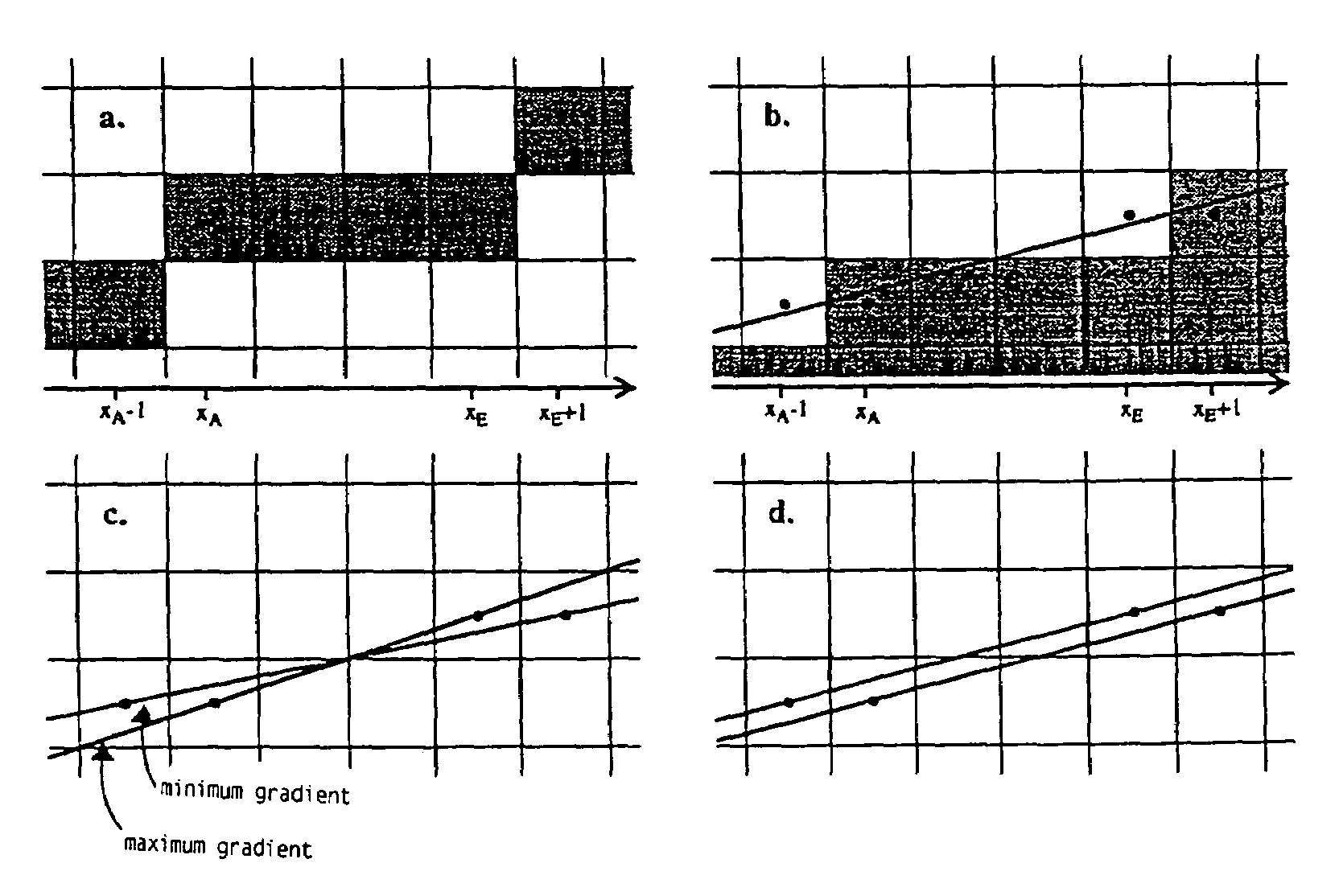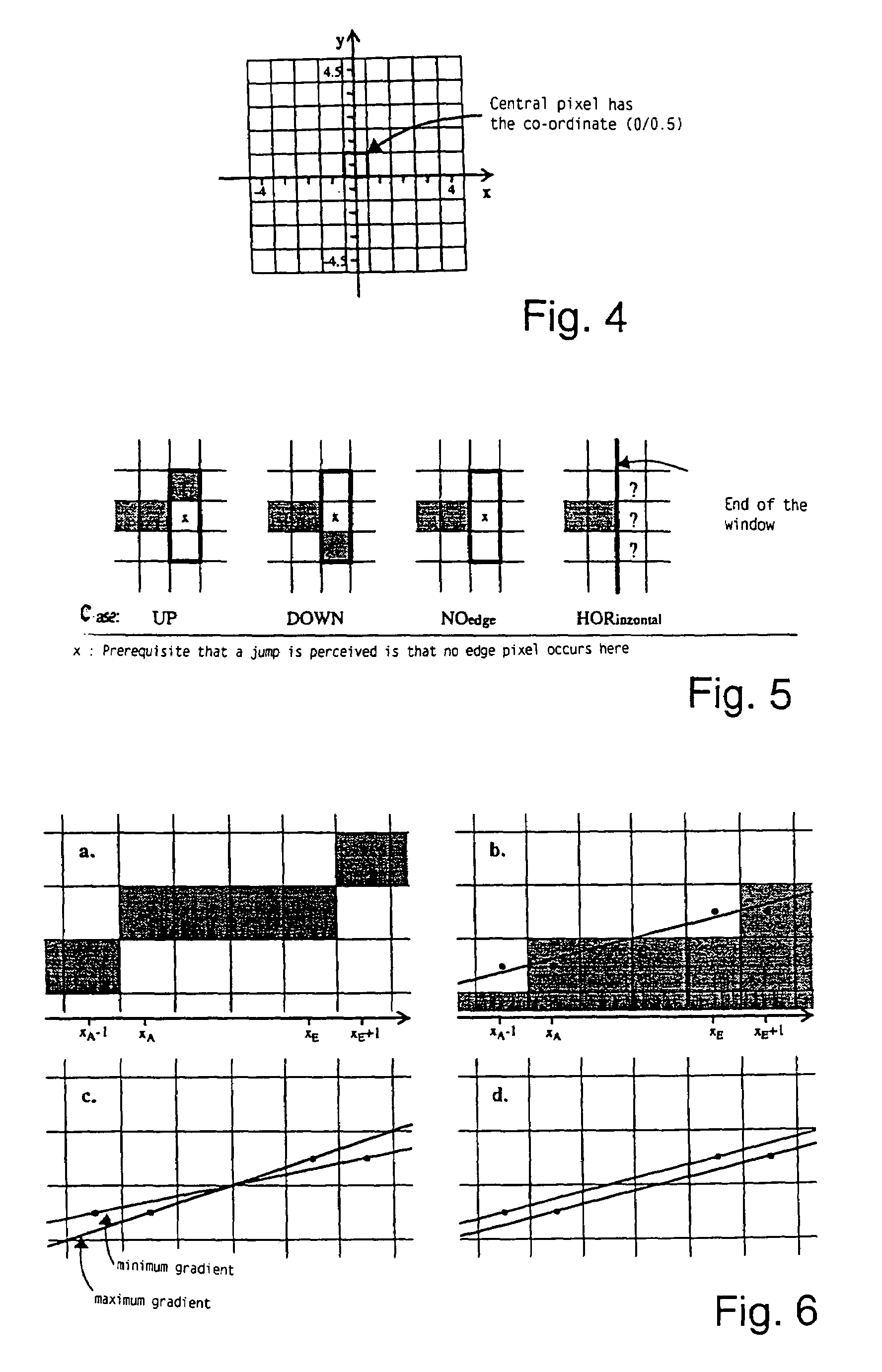Method and apparatus for eliminating unwanted steps at edges in graphic representations in the line raster
a line raster and edge technology, applied in the field of computer graphics applications, can solve the problems of excessive memory and computing power demand, limited capacity, and aliasing effects of rasterization, and achieve the effect of improving image quality
- Summary
- Abstract
- Description
- Claims
- Application Information
AI Technical Summary
Benefits of technology
Problems solved by technology
Method used
Image
Examples
Embodiment Construction
[0116]To describe the details of the method the operating procedure of the “post-anti-aliasing” method in accordance with the invention will firstly be described in greater detail with reference to pixel representations of the edge regions to be viewed.
[0117]From the signal engineering point of view, an edge image can be obtained by convolution of the image with a mask, the sum of which is zero. The sum of the elements in the mask must give zero as it is only in that way that the steady component in the image can be removed (that is to say single-colored areas will have a value of zero in the edge image). In order to be able to secure that condition, both positive and negative elements must be contained in the mask so that the (for example) gray value image produced by convolution will include positive and negative values. In that respect the magnitude of the gray value is a measurement in respect of the strength of an edge in the pixel being considered (a value of zero therefore me...
PUM
 Login to View More
Login to View More Abstract
Description
Claims
Application Information
 Login to View More
Login to View More - R&D
- Intellectual Property
- Life Sciences
- Materials
- Tech Scout
- Unparalleled Data Quality
- Higher Quality Content
- 60% Fewer Hallucinations
Browse by: Latest US Patents, China's latest patents, Technical Efficacy Thesaurus, Application Domain, Technology Topic, Popular Technical Reports.
© 2025 PatSnap. All rights reserved.Legal|Privacy policy|Modern Slavery Act Transparency Statement|Sitemap|About US| Contact US: help@patsnap.com



